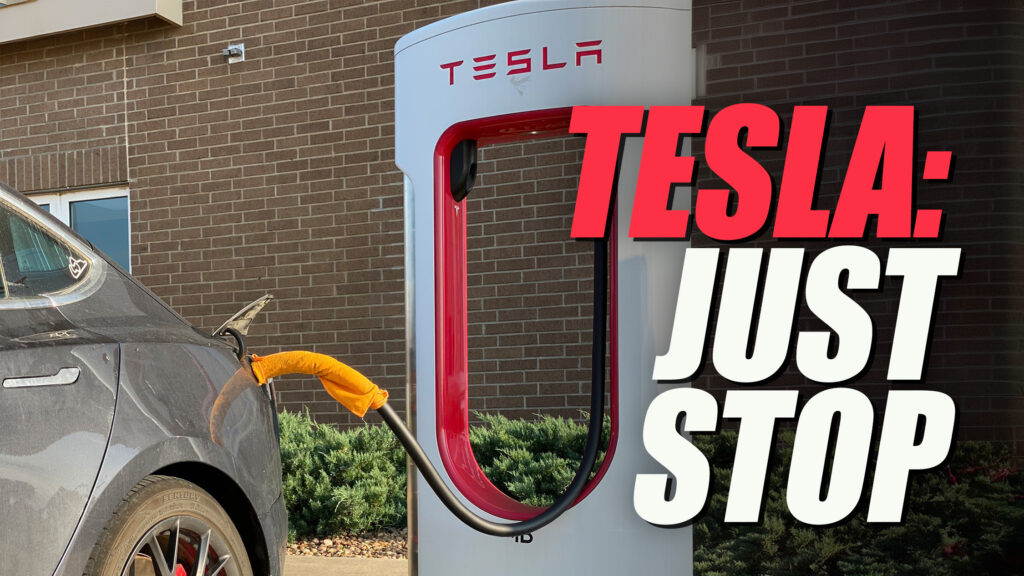- Tesla has told owners not try a wet-towel charging hack that has gained internet notoriety.
- Owners believe that wrapping a cool, damp towel around a Supercharger’s handle speeds up charging.
- The automaker claims the hack doesn’t alter the charge speeds but could confuse the Supercharger’s temperature sensors, causing it to malfunction.
There are thousands of car hacks floating around the internet, tips that have been around for decades like dropping a raw egg into your cooling system to plug a radiator leak, or cleaning your headlights with toothpaste to keep them nice and clear. But Tesla has stepped in to stamp out one viral trend that some EV owners claimed helped them charge faster.
The trick Tesla wants to stop involves placing a cool, wet or damp towel on the handle of a supercharger, the idea being that it can cool the handle down, allowing it to send juice to the car at a faster rate on hot days when the charge rate might otherwise be restricted.
Related: Teslas Have A Hidden Safety Trick To Shut Down The High-Voltage System
One Model S owner on teslamotorsclub.com claimed that his car was charging at 60 kW before he wrapped a towel around the handle, which upped the rate to 95 kW. And Out Of Spec Studios tweeted to say they used the hack on a Tesla that had thermal-throttled from 147 kW to 58 kW, the addition of a “room-temperature” wet rag pushing the rate back up to 119 kW.
Concerns about mixing electricity with moisture don’t, er, hold water, because the Superchargers and car charging sockets are all designed to withstand rain. But Tesla has another reason for wanting to stop owners trying the trick.
Placing a wet cloth on Supercharger cable handles does not increase charging rates and interferes with temperature monitors creating risk of overheating or damage. Please refrain from doing this so our systems can run correctly, and true charging issues can be detected by our…
— Tesla Charging (@TeslaCharging) July 25, 2024
“Placing a wet cloth on Supercharger cable handles does not increase charging rates and interferes with temperature monitors creating risk of overheating and damage,” Tesla said on X.
“Please refrain from doing this so our systems can run correctly, and true charging issues can be detected by our systems.”
Inside EVs says the method only works on older V2 Supercharger stalls because newer ones already have a cooled handle. The exception is the Cybertruck, whose 800-volt system functions like a pair of 400-volt batteries and can make even the V3 Superchargers’ cooled handles toasty.
Another extreme wet rag supercharger test. Plugged in at 2% SoC – ramped up to 147kW as normal and thermal throttled at 34% down to 58kW. Slapped that room temperature soaking wet rag and it climbed back to 119kW where it hit the internal charge profile limit. Amazing!
— Out of Spec Studios (@Out_of_Spec) August 31, 2020pic.twitter.com/0o6VGgdhc9
Image credit: Out of Spec Studios




